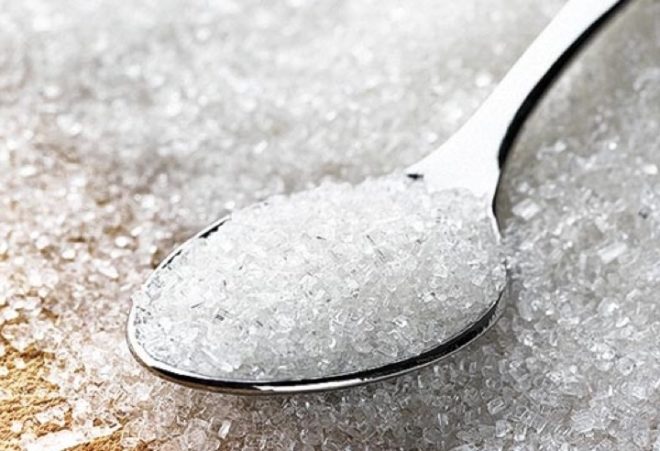Sugars such as glucose are an essential source of energy for the brain’s metabolic process but there is a flip side.
The term “sugars”, is used to describe the family of macronutrient carbohydrate molecules that are essential for ensuring the brain and body function effectively across a wide range of cellular and metabolic processes – in fact just about any physiological mechanism which requires energy.
Glucose – a marker of brain activity.
This energy supply function means that sugar variants, such as the molecule glucose, are pervasive throughout nearly every brain cell. This is also one reason why brain imaging methods such as Positron Emission Tomography (PET) use Fludeoxyglucose (18F) – a glucose analogue – to measure glucose metabolism in the body and brain as a marker of ongoing activity. (See related post 7 ways to peer into the living human brain). The assumption is that metabolic activity tracks neural activity. This therefore allows researchers to observe which regions of the brain are activated when people are performing a particular mental task – similar to the blood-oxygen level dependent (BOLD) response in fMRI.
But as well as using glucose as an indirect marker of neural activity simply by measuring it’s fluctuating levels within the brain, researchers have also explored, using EEG and other imaging methods, what happens to brain activity when you change the availability of glucose in the brain through dietary manipulations.
Glucose consumption and brain function
For example, Yeon Joo An from Konkuk University School of Medicine in South Korea asked participants (n=24) to ingest a glucose rich orange juice drink after a period of ~8 hours without food. They used EEG to measure the brain’s resting-state as well as the pattern of brain activity during an digit span task before and after consuming the drink. The EEG results showed an overall increase, albeit a small one, in resting-state alpha and theta activity after consuming the glucose drink (vs the pre-drink baseline) across occipital and frontal regions. They also found an improvement in task performance in participants after consuming the glucose drink. However the authors failed to find any specific correlation between these changes in EEG activity and the task improvement. Potentially this was due to various experimental confounds. The authors note that training effects caused by asking participants to perform the task over multiple occasions may play a role. Or perhaps the measures of EEG were not quite the right ones (see related post The Blue Frog in the EEG).
However, other studies utilizing brain imaging techniques such as fMRI have been able to show glucose-related changes in the level of activity in brain regions linked to specific cognitive processes. For example a study by Marise Parent and colleagues from Georgia State University and Emory University focused on the effects of glucose on the brain’s episodic memory functioning. In their task they asked participants to remember pictures which had different levels of emotional valence immediately after drinking a glucose drink, or a placebo controlled saccharin drink. They found that drinking the glucose drink preferentially enhanced encoding-related activity in the hippocampus, and this enhancement resulted in improved recall performance of the pictures the following day.
Modulatory effects have also been shown using event-related potentials (ERPs) (n=11) where glucose led to a decrease in the amplitude of the memory-related P3b component during an oddball task, versus a saccharin control. In contrast the glucose did not significantly influence the earlier attention-related ERP components (P3a and P2) suggesting that glucose may differentially influence different facets of cognition. The authors suggested that the observed decrease may have been due to the glucose treatment promoting more efficient brain processing, therefore requiring fewer cognitive resources for the task.
The dark side of sugars
But glucose isn’t the only sugar of interest. Fructose – the sugar most commonly found in fresh fruit, and sucrose – the type of sugar that comes from sugar cane and is refined into the sugar that we find in the aisles of the local shop.
Here, most of the focus has been on the other side of sugar – the “darker side”. Because although sugar is useful for maintaining energy levels, too much sugar is a contributing factors in conditions such as obesity and diabetes. Furthermore, some scientists have found that some sugars may be addictive in animals and activate the same kind of reward pathways which are activated by other addictive substances. However the evidence for this is still not substantiated in humans and may depend on the wider behavioural context. For example, a study by Matthew Tryon and colleagues from the University of California suggest that repeated sugar consumption can be connected to the body’s cortisol-based stress response and that when under stress, people may be more prone to becoming “hooked” on sugar.
You are what you eat.
Globally, many countries are reporting an increase in diseases and disorders which are, in part, influenced by the dietary choices made at an individual level, and the macro-nutritional content of the foods on offer at different prices points . However, less is known about the influence of these macronutrients on brain function (see related post Your Brain from Noodles to Nuts), particularly its long term effects. Understanding how different macro-nutrients can influence brain function and development, and how patterns of behavior are set up from a very young age, is essential for providing the necessary educational information to guide policy decisions. Only by conducting global studies which can accurately reflect regional diets and nutritional intake across the world, and which take into account the wide range of demographic factors which underpin dietary choices, can researchers start to get to the bottom of the true effects of how the diverse range of foods we eat impacts the body and brain.

